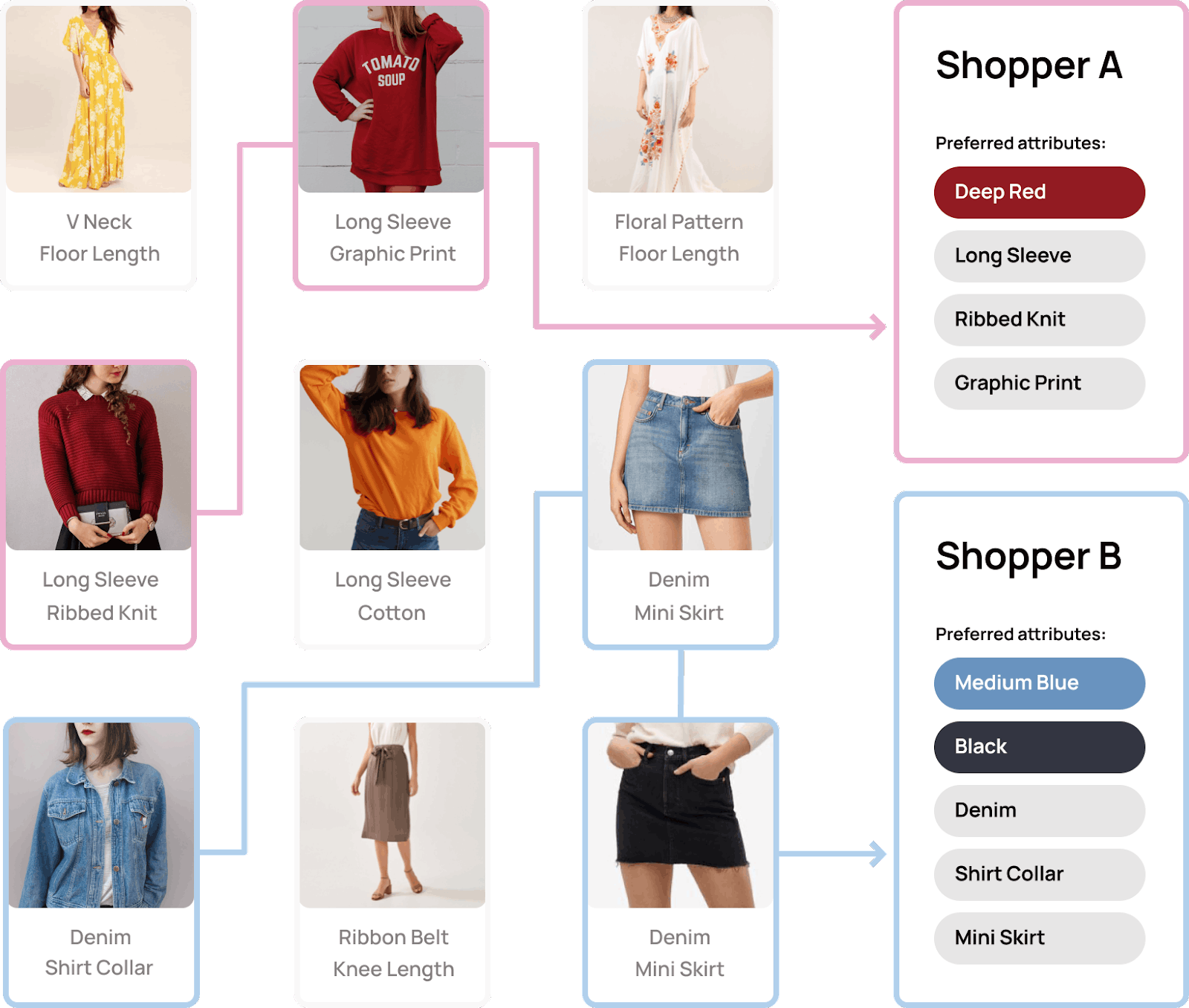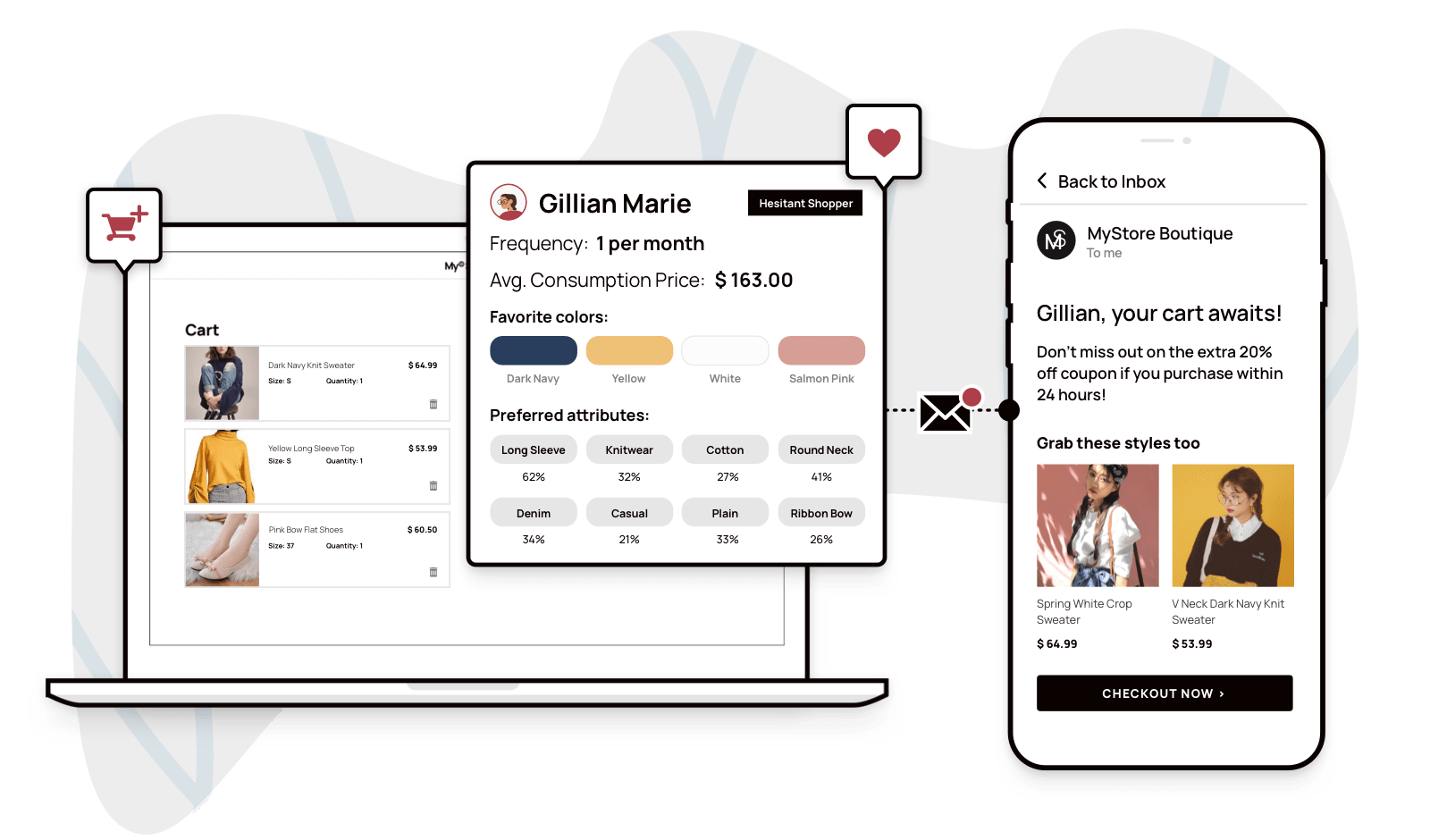Businesses know that data analysis and customer profiling are critical to their success. For years, they have relied on third-party data, such as browser cookies, to create marketing campaigns and fine-tune customer profiles; however, the cookie crumble has begun and businesses that are not yet ready for a cookieless future should start preparing.
It’s time for a long-term first-party data strategy.
What is first-party data?
First-party data is information that companies like to collect directly from their audience, which includes current or potential customers, website visitors, social media followers, or anyone who has engaged with their brand or product in some way, whether online or offline.
First-party data marketing 101
More brands are realizing that first-party data can drive marketing success to greater heights. When intentionally and strategically used, first-party data can have limitless potential and can provide valuable consumer insights that can spell a big difference in growing businesses in a data-driven future.
Many businesses have already been engaged in first-party data collection. It may be as simple as asking a customer for an email address while registering for a loyalty program, or maybe getting a contact number for retail billing. The question is, are they actually optimizing this intelligence to propel their growth?
How can you put first-party data to work?
Improve customer experience
Traditionally, acquiring a first-time buyer is a key focus of online marketing strategies. Companies would naturally rely on browser cookies to learn about the “ideal customers, who they are, what their preferences are, and what channels or messages may be effective to lead them to their first purchase. With cookies disappearing soon, how else can companies gain such valuable intelligence?
Customer experience does not begin nor end with a single purchase; hence, a data-based marketing strategy should not focus on first-time acquisition alone. First-party data allows you to understand past purchase behavior, present preferences, and even future intent, so you can start paying attention to the entire marketing funnel: from a simple awareness of your brand, to purchase consideration, to actual conversion. You can then tailor experiences that help achieve lower-funnel goals of loyalty, retention and advocacy.
First-party data lets you gain the powerful edge of looking into buyer behaviors throughout all the stages of the purchase journey and craft appropriate campaigns to meet them at each specific stage.
With customer insights gleaned from data you yourself defined, collected and already own, you can create customer-centric campaigns across the full customer journey that are both personal and meaningful, in multiple platforms and channels, instead of your competitors’ generic experiences.
Build customer relationships
Companies that know more about their customers can optimize the intelligence they gather to improve customer relationships. Personalized messaging shows customers you understand their pain points, are ready to meet their needs, and are capable of delivering what they prefer.
When brands make a personal connection by including personal aspects in their marketing communication, they do not only build the business but also build emotional connections that increase customer satisfaction and loyalty.
And when your customers are happy, they not only become loyal to your brand, but they also become advocates ― they spread the word about you. When you build strong customer relationships, you retain current customers and gain new ones. In the long haul, this saves you more money because you will be spending less to attract new customers.
Now that we have firmly established the importance of a long-term first-party data strategy, let’s dive into one of the best ways to collect first-party data.
What is progressive profiling?
Raring to collect and use first-party data to understand your customer and create a customer profile to craft an effective marketing campaign? The first thing you do is create a form for your customers to fill out, right?
You can do that, but with heightened concern for data privacy, forms will most likely just cause customer churn. No one wants to wittingly divulge personal information to an organization, much less go through this time-consuming and painstaking process.
Your customers no longer want blanket, generic messaging. So how can you deliver meaningful, personalized experiences without having to use forms that they refuse to fill out anyway?
A progressive approach to data analysis
Progressive profiling, as its name denotes, is a method of collecting information about your audience in small bits instead of giving them a 10- or 20-field questionnaire at once. With this method, you can, for example, initially ask for just an email address.
Then throughout the purchase journey, you can strategically collect more information at intervals within each stage of the funnel. This way, the customer is not overwhelmed with the data collection process, thus minimizing churn.
While this strategy is found to be more effective in increasing conversion rates, this somehow still requires forms, albeit shorter and fewer ones. Could there be a much better option? One that altogether eliminates forms?
The good news is YES! There is a progressive profiling method that eliminates forms! It’s seamless, robust, and accurate preference analytics at its finest.
Using a consumer insights platform for progressive profiling
Technology has gone a long way in helping deliver personalized omnichannel customer experiences. At the forefront is Rosetta AI, a customer insights platform using artificial intelligence (AI) to generate preference analytics for personalization.
Preference analytics refers to quantitative and qualitative tools that record products viewed by consumers and generate their preference information into easy to read customer profiles that can be shared amongst marketing teams. The data collected helps companies predict customer preferences and allows them to improve or target offerings to specific audiences.
Let’s say a shopper is browsing images with the intent to purchase clothing of a certain color. Rosetta AI builds up the shopper’s preference profile by using AI visual recognition to analyze preferred attributes.
In the example below, Shopper A’s preferred attributes in order of importance are: deep red (color), long sleeve (structure), ribbed knit (material), and graphic print (design).
Shopper B’s preferred attributes are medium blue, black (color), denim (material), shirt collar (structure), and mini skirt (type).

By using Rosetta AI, you gain valuable customer insights into what the shopper is looking for. Rosetta AI generates the preference profile for you on the merchant’s dashboard, which looks like this:

Based on this preference profile, Rosetta’s recommendation engine then helps the shoppers find the right item to purchase. It provides an easy and smooth shopping experience. The shoppers are delighted about getting on-point recommendations based on Rosetta AI’s accurate prediction of their preferences and your brand gets the rave reviews.
Why progressive profiling reduces churn
Almost anyone is wary of forms. Some people even hate them. With progressive profiling, your customers can immediately engage with your product without getting disrupted by annoying long forms, and you can immediately show them the value of your product. Once they are satisfied with the initial engagement, they will be willing to build a relationship with your company or brand.
As shoppers freely browse your website without cumbersome forms, over time, you can build deeper connections with them and expand your data into detailed shopper preference profiles that get more granular. You are happy, the customer is happy and becomes a loyal customer.
Rosetta AI makes it easy for your company to get the information you need to create your target customers’ profile and helps you understand them better so you can segment them effectively.
Progressive profiling and nurturing VIP customers
By collecting relevant information dynamically, you get not only high quantity but also high quality information from your users. This allows you to segment and serve them better, generate the right leads, and accelerate your company’s growth.
Through progressive profiling, you can construct personas and tailor targeted campaigns that make your customers feel that you are speaking to them directly and catering to their specific needs at every touchpoint of the journey.
This practice of omnichannel personalization is a powerful ability to personalize across all possible channels where the user interacts with your brand. It integrates both online dand offline channels (OMO, or online-merge-offline) into a consolidated shopping experience, and personalizing that experience whether through the web, mobile phone apps, email, in-store, or direct mail. It recognizes that online and offline platforms should not be treated separately nor exclusively, but should in fact be interdependent and merged to better connect with the customer.
If you wish to nurture and retain your VIP customers, progressive profiling is the most effective way to know more about them and understand them. Armed with an arsenal of customer insights, you can then progressively build an effective personalized online and offline customer experience and a strong brand loyalty program.
The image below shows a customer’s profile detailing her identity, how often she shops, the amount she spends on average, preferred products attributes, and even her favorite colors! As a member of your VIP Club, she receives direct mailers on a regular basis, which includes product recommendations based on her preferences, and of course, attractive discounts to reward her loyalty to the brand and to entice her to make a purchase within 24 hours.

Final thoughts
Learning as much as you can about your customers is essential to any business. Third-party data like web browser cookies used to be the go-to method for determining customer preferences and building customer profiles, but the cookie crumble is happening soon and businesses must learn to thrive and lead in a cookieless future.
First-party data, which is consumer intelligence collected and owned directly by companies, offers a better alternative to third-party data. Though companies have been collecting first-party data for years, many of them do not know how to make full use of it and others employ means like long forms, which cause more customer churn than conversion.
In this age when people put a premium on privacy but marketers need data more than ever, progressive profiling using a consumer insights platform like Rosetta AI provides seamless preference analytics that enable brands to deliver unique and meaningful personal experiences.
Companies know that generic experiences do not give competitive edge. They can leverage Rosetta AI to generate a holistic, personalized omnichannel journey to make every touchpoint count and enhance the customer’s overall experience.







